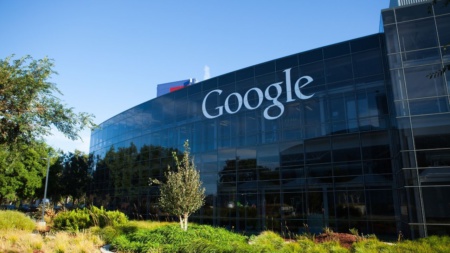Google Search Traffic Caps Are Real! (And What To Do About Them)
I started blogging in July 2019, and everything was going swimmingly. Until February of 2021, when Google started capping my traffic at ~13,000 clicks per month (for 9 straight months and counting).
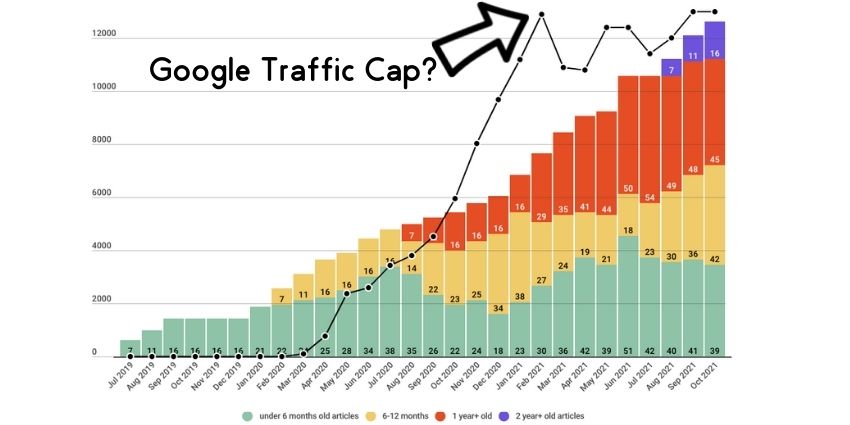
Getting stuck at 13,000 clicks per month could just be a coincidence and not some arbitrary cap Google places on websites. It’s hard to definitively prove otherwise. That said, I have several reasons I believe this is an artificial cap being placed on my site by Google and not some big coincidence.
1) I’ve More Than Doubled The Number of Articles on My Site Since Hitting The “Cap.”
This is the most damning evidence that Google imposes an artificial cap on domains. At the beginning of January 2021 (when I first reached the cap), my website had 68 blog posts. By November 2021, I had 145 articles. I added 77 articles in 10 months (110% increase) and saw 0 traffic growth and very little impression growth.
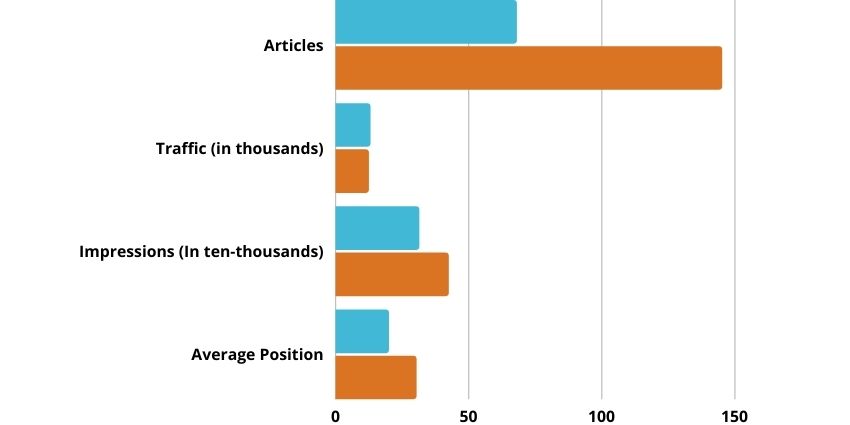
And that could just be a big coincidence. I can’t just say, “I have twice as many articles, so I should be getting twice as much traffic now.” Maybe all of my new content sucks, and it makes perfect sense that I’d be stuck at 13,000 clicks a month. It could still be a coincidence and not a traffic cap imposed by Google.
Except 8 of my top 20 articles this year were published in January 2021 or later! That means 40% of my top 20 articles came into existence AFTER hitting the cap.
And you can see this in my data. As my new articles came online, my average position dropped precipitously to whatever it would take to keep me at exactly 13,000 clicks. Here’s my search console data over this period.
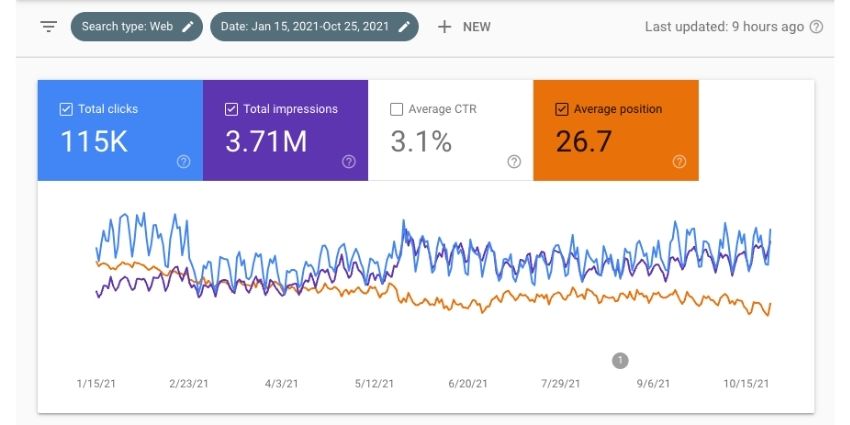
And again, it could just be a big coincidence. Maybe I just had one excellent article in Google that tanked by the same amount the new articles gained traffic. Except, I have the data to prove that’s not true. My top 10-ish articles dropped the exact same amount of traffic the new posts were gaining every month.
That’s pretty fishy. It’s hard to imagine that’s just a big coincidence. But, it gets even more damning when you factor in this “traffic cap” held up through the Core Web Vitals update.
My site is blazing fast and passes core web vitals! So I was hoping for a modest bump in mobile traffic when that rolled out in the June-July timeframe. But, here’s what actually happened when you compare the 3 months of mobile traffic before CWV to the 3 months after CWV rolled out.
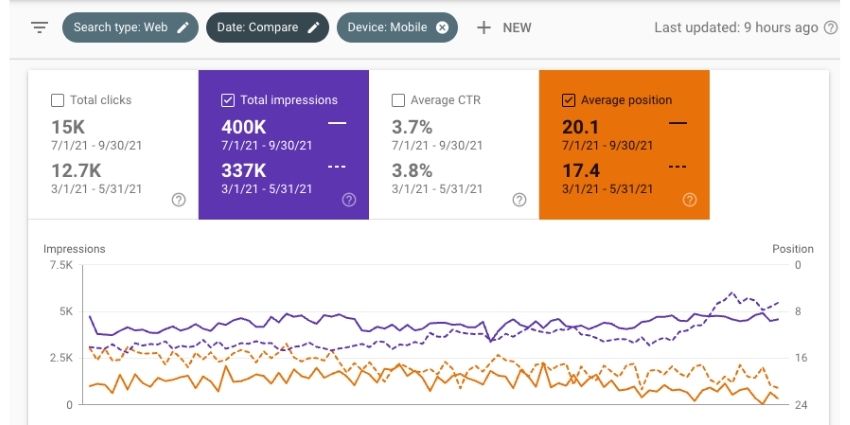
Yes, I did see a slight increase in impressions and clicks. But, keep in mind that the number of articles on my site nearly doubled over this time. Plus, I passed Core Web Vitals and my average position dropped three spots! Meanwhile, my desktop traffic decreased by the exact amount needed to keep me at 13,000 clicks a month.
This would have to be a mighty big coincidence if it’s not a traffic cap being imposed by Google.
Why is This Happening & How Do I Escape From It?
My best guess is that Google is becoming increasingly scared that a random site will pop up and spread a bunch of misinformation. Google’s attempting to limit the amount of damage any individual small player can do by imposing a traffic cap on them. It might be less damaging to society if they limited traffic to sites they’re not sure if they trust yet.
And again, that’s a guess. I’ve asked Google directly about this, and they did not respond. They’ve never publicly admitted to having a traffic cap on small websites (even though they probably do).
#AskGooglebot Does Google cap how much traffic a site can get overall, or is each piece of content handled individually?
— Shaun Poore (@shaunpoore) September 14, 2021
I’ve doubled the articles on my blog the last 8 months. New articles gained roughly the same clicks/impressions that the old articles have lost. Coincidence?
In the event traffic caps are real and not just a figment of my imagination, it sucks for a few reasons.
- You like to think that if you create the best article, you’ll eventually rank #1 and not be artificially held back by your website’s backlink profile.
- Since Google doesn’t admit traffic caps are real, it’s hard to determine how to break out of this situation.
- A traffic cap creates a high level of business uncertainty when writing articles. Suppose a new article is simply going to take away traffic from my other popular articles. In that case, it’s hard to justify continuing to write blog posts.
And that’s where I’m at in October of 2021. I’ve been writing a lot of content this year. Still, after seeing these results, I’m debating if I need to focus more of my efforts on YouTube, product creation, and website improvements (adding email lists, etc.).
I’ll update this post when/if I ever break free of the dreaded Google search traffic cap. And let you know what it took to get there.
